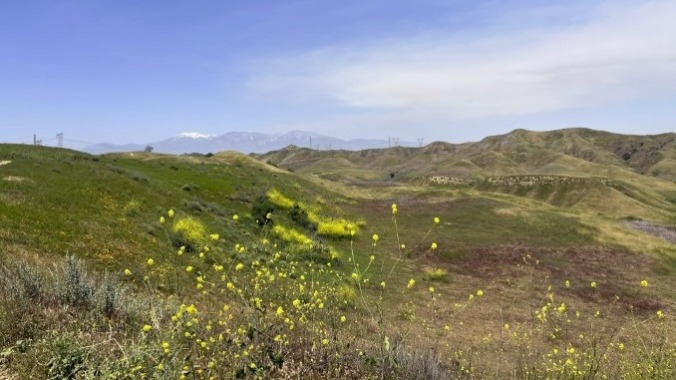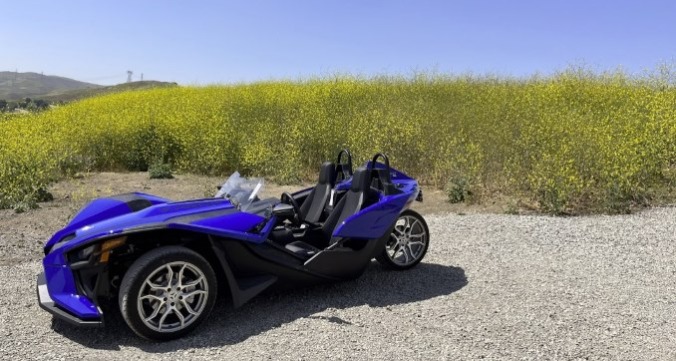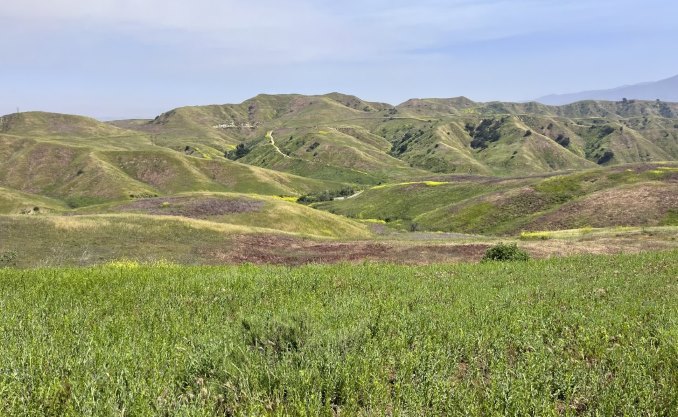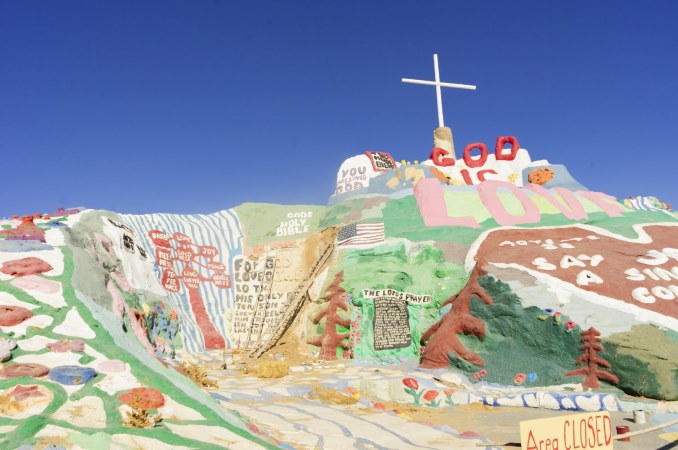Slingshots, Color, and Open Roads: How to Explore California’s Spring Wildflowers

Beaches. Mountains. Deserts. Cities. California has a lot, and it’s known for a lot, but in the mix of some of the most incredible scenery in the United States, one excellent feature is often overlooked—spring wildflowers. With California’s famous—perhaps infamous—”atmospheric river” that has dumped a deluge of water on the Golden State recently, the conditions are especially ripe this year for a rare “superbloom” of kaleidoscopic colors that is not to be missed.
While places like Joshua Tree and Death Valley dominate headlines with their impressive annual blooms, what fun are long lines and crowded hikes? A road trip exploring the backroads and less-traveled state parks is the move here, as is making the right choice of vehicle with which to explore this vibrant side of the landscape. A regular car won’t suffice—too many windows and barriers deprive the senses and get in the way of fully experiencing the legendary California spring. If you want that giddy feeling of excitement that comes with turning loose and losing yourself within California’s less frequented, sun-drenched highways, look no further than a Slingshot.
Slingshots are an awesomely quirky three-wheeled car/motorcycle hybrid that I was given the chance to try and quickly discovered that they are perfect for this kind of open-ended drive in the springtime. The lack of any roof (although they can be installed for the rainier corners of the country) means I could fully immerse myself in every breeze, ray of sunshine, and scent of blossom wafting my way. There was a helpful map to ensure I wouldn’t get lost, and a must for any self-respecting road trip—a Bluetooth sound system to ensure that the Warren G and other bits of California hip-hop that I had planned to accent my adventure would be blasted triumphantly through the speakers. Most importantly, given the lack of ground clearance, I could also maximize the thrill of every turn and boost of speed. With all the right senses accounted for, what more could one ask for in exploring the majestic, open roads out west? After shooting some photos and practicing getting down the tight, responsive controls driving the Pacific Coast Highway, I was turned loose on the California roads. The only instructions I was given were, “Don’t miss your flight.” Nice.

A voyage into California flora is best pre-gamed with a stop at the Antelope Valley Poppy Preserve just north of Los Angeles in Lancaster. While on the smaller end, the park more than makes up for its diminutive size with the sheer warmth of the fiery orange hues emanating from the namesake poppies during peak season, which also double as the state flower. If you’re willing to trek further north, consider also starting at the Carrizo Plain National Monument. The idyllic landscape here becomes overrun with a flush, mesmerizing cascade of purples, greens, and golds in the spring, where the color more resembles a sugary treat with sprinkles or like someone dumped buckets of paint on the hills than any sort of natural occurrence.
From here, either skirt the northern edge of the San Gabriel Mountains to I-15 (or better yet, take the scenic route and cut through them), ultimately making your way to Chino Hills State Park. Asking the ranger about the best places to see spring color at the gate promptly led me around a few snaking roads to the head of the Bane Ridge Trail. It was hard not to admire the sight of the rolling emerald hills, morphing into dramatic snow-capped peaks far in the distance, as well as the incredible silence—so much so that I would have never guessed I was firmly inside the second-largest metropolitan region in the United States. As I walked past the vivid yellows, purples, reds, and oranges waving hello to me in the wind, I eventually encountered a power relay station with a set of buzzing power lines swooping into the horizon that inspired me to take a seat in a secluded, meditative corner off the trail to enjoy better the quiet and the visual splendor of the sun, flowers, and elevation before me.
-

-

-

-

-

-

-

-

-

-

-

-

-

-

-

-

-

-

-

-

-

-

-

-

-

-

-

-

-

-

-

-

-

-

-

-

-

-

-

-










































